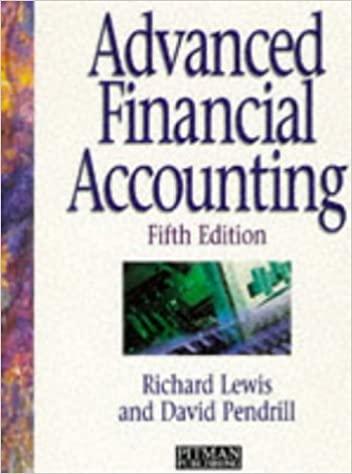Question
The project will last 5 years. The price of an average package of fries should be $6 per unit. Under the current conditions, it is
The project will last 5 years. The price of an average package of fries should be $6 per unit. Under the current conditions, it is not expected that the price will change over the life of the project. The store is expected to sell 20,000 units the first year, with an annual growth of 5% in the units sold. The main variable costs are pre-fry potatoes, canola oil, mayo, mustard, ketchup, fries containers, napkins and plastic silverware. The economic study has also found that the variable costs should be 40% of the sales revenues. The main fixed costs are rent ($10,000/year), utilities ($5,000/year), and gross salaries for two part-time employees ($10,000/year). In summary, it is expected that the fixed costs will be $25,000 per year. It is not expected that those fixed costs will change considerably over the life of the project. The initial investment has to finance the purchase of the frying equipment, the fridge, the freezer, furniture for customers (tables and chairs), the cash register, and some long-term kitchen tools. It is expected that the capital expenditures should cost $200,000. The project has to purchase its first batch of inventory (pre-fry potatoes, fries containers, napkins, etc.) in order to begin selling French fries as soon as the business starts to operate. At the moment of the inventory purchase (t=0), the French fries store has not generated any income, because it is not in operation yet, but still it has to pay to its providers in the short-term. The required initial investment in inventory (change net operating working capital) is expected to be $20,000 and it will be fully financed with cash. The IRS has stated that the refrigerator and freezer and other long-term assets should be depreciated linearly in 5 years, that is, 20% each year. The corporate income tax rate is 40% of profits. The residual inventory at the year of closing the project should be sold at the same price of its purchase. Therefore, it does not generate taxable capital gains. The salvage value of the capital expenditures at the closing year is $100,000. That is, the market price at which the business can expect to receive for selling the fryer, refrigerator, the freezer and the furniture, at the moment of closing the project. The weighted average cost of capital (WACC) is 8%.
Lets consider the stand-alone risk of the project (10% of your grade). Assume that you have three possible scenarios for sales. The worst scenario is that you have long recession and the units sold per year are 30% less than predicted. The best scenario is that to have a long economic boom and the units sold per year are 30% more than predicted. Finally, there is a base scenario in which the units sold are as predicted. The probability of having a recession is 25%. The probability of having an economic boom is 25% and the probability of having normal times (base scenario) is 50%. 1. Compute the expected value of NPV, the standard deviation of NPV and the coefficient of variation of NPV. 2. If you assume a 4% risk adjustment over the cost of capital (8%), do you still approve the project? Explain
Step by Step Solution
There are 3 Steps involved in it
Step: 1

Get Instant Access to Expert-Tailored Solutions
See step-by-step solutions with expert insights and AI powered tools for academic success
Step: 2

Step: 3

Ace Your Homework with AI
Get the answers you need in no time with our AI-driven, step-by-step assistance
Get Started


